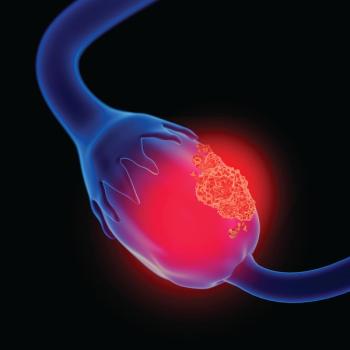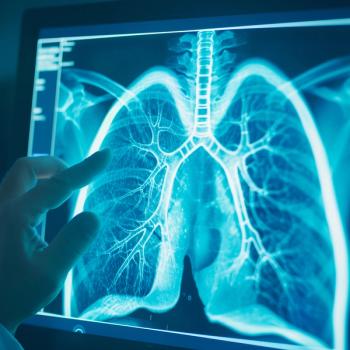
Fruits, Vegetables and Water are Key Components of a Healthy Diet During and After Ovarian Cancer
Strategies from expert oncology dieticians can help patients to eat an appropriate diet and maintain a healthy weight during and after treatment for ovarian cancer.
When undergoing therapy for ovarian cancer, or after treatment has ended, patients often ask what they can do to improve their own health and prevent disease recurrence.
One of the most important ways these patients can contribute to their own well-being is by eating an appropriate diet that helps them get to and maintain a healthy weight. This can be a difficult task for women living with side effects such as bowel problems and appetite loss, but strategies developed by experts in oncology nutrition can help.
Advice in that area was shared during the 2017 Ovarian Cancer National Conference by Jill Bice, an outpatient oncology dietitian at University of Chicago Medicine. Bice gave a talk, “Nutrition for the Patient With Ovarian Cancer,” during the conference sponsored by the Ovarian Cancer Research Fund Alliance, which took place July 7-9, in Chicago.
Prior to her presentation, Bice sat down with CURE® to discuss key principles of healthy eating in those who have experienced ovarian cancer.
What are the basic principles you’ll be discussing in your talk?
We’re going to go through our main goals: for people to maintain their weight throughout their treatment and meet their nutrition needs.
We also want to make sure that patients are maintaining their muscle stores as best they can, staying well hydrated and just trying to improve their quality of life through nutrition.
Finally, we’re going to talk about healthy eating once patients are through with their treatments. The best things patients can do to stay healthy afterwards is to get to and maintain a healthy weight, be active and eat a more plant-based diet — not necessarily a vegetarian or vegan diet, but just increasing fruits and vegetables and other plant-based foods.
Changing dietary habits is easier said than done. Do you have any suggestions that can make the process easier?
Once patients are through with their treatments, if they’re not having any side effects that are inhibiting their eating, I encourage them to start by increasing their fruit, vegetable and water intake every day. Making it a goal to eat three vegetables a day and two fruits a day, and to drink eight glasses of water a day, is a good place to start.
Increasing all those healthy things in your diet often does eliminate the consumption of junk food, because you’re too full — you fill up on the apples and the carrots and the celery, and you don’t go for the cookies and the cakes as much. And drinking more water will help you decrease your intake of juices and pops and all those sugar-sweetened beverages that can increase your weight.
Do patients treated for ovarian cancer have unique or specific dietary needs?
It depends what kinds of treatments they’ve had. A lot of times, if they’ve had radiation treatments, patients will experience diarrhea quite a bit, so we help them manage these symptoms by encouraging them to choose more low-fiber foods; we want to increase the absorption of the foods they are eating.
If patients have had a lot of surgeries, that can alter their bowels. Our goal is to manage these symptoms and get them back to eating a regular diet as quickly as possible.
Are there certain foods that people who have had ovarian cancer should avoid?
There aren’t any foods that you can’t ever eat again, unless there’s an allergy or some other specific reason. But there are foods that should be limited.
The American Institute for Cancer Research has come out with new recommendations for red meat; they’re recommending no more than 18 ounces a week, and that includes beef, as well as pork. As for processed meats like bacon, ham and sausage, they’re encouraging people to just eat those on special occasions, due to research indicating that they increase the risk of colon cancers. Lean protein sources are the best. Trying to incorporate more meatless meals throughout the week could be a good place to start.
The typical American diet is pretty high in starch, and it’s a good idea to decrease that as much as we can. Patients should limit starches to just a quarter of their plates, and increase their fruit and vegetable portions to cover half their plates. If you want to have a sandwich or a hamburger, try pulling off the top part of the bread or bun to decrease your starch portion, and if you go out to eat, ask for double vegetable portions for your sides: Get two vegetables instead of the fries. Sweets should just be eaten on special occasions.
How can friends and family members help support nutrition for women who’ve been through treatment for ovarian cancer?
People often ask patients how they can help, and a big way is by making you food, so take advantage and ask them for meals. You’re going to be tired after treatments and not feeling like eating, and the task of having to prepare a meal can be a little bit daunting. If you have a meal already prepared for you waiting at home, you’re more likely to eat a little bit better. Just remember that people really do want to help; when they offer, they truly mean it, so take them up on it.
As far as caregivers who are living with you, so many that I work with are exhausted, because they’re preparing all these meals that the patients just don’t want to eat. I encourage them to just be persistent, because they’re doing the right thing, and I always ask my patients to be a little nicer, and to remember that their caregivers are trying to help. I ask them do their best to eat a little bit at each meal.
In so many health recommendations, diet and exercise go hand in hand. Where does exercise fit in for this population?
I’d recommend talking to your physician or even a physical therapist to get set up with a good exercise regimen, but start slowly after treatments. You’ve been through a lot, so don’t think you’re going to go out and run a marathon the first day. Even starting by walking for a few minutes every day can really help.




